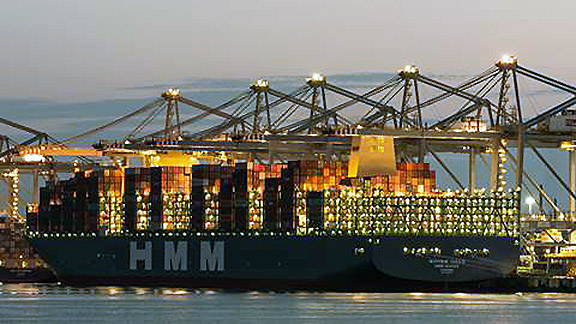-
HMM says all but one of its 67 vessels are sailing under Carbon Intensity Indicator rules
-
The company’s CII compliance is verified by the Korean Register’s Greenhouse Gas Emission Authentic Reporting system
-
CII is an energy efficiency rating required by the International Maritime Organization for ships with tonnage above 5,000 gross tons
About 99% of the container ships and bulk carriers HMM owns have been verified as CII (Carbon Intensity Indicator)-compliant by the Korean Register’s KR GEARs, a greenhouse gas (GHG) emission authentic reporting system.
HMM in a statement said all but one of its 67 vessels are well-placed to continue sailing under the CII regulation that came into effect this year.
These vessels received KR GEARS ratings ranging from A to D, emission measures that allow vessels to continue operating.
One HMM bulk ship that was rated E is expected to improve its CII rating by adjusting ship speed and using low-carbon biofuel.
CII is rated A, B, C, D, or E (where A is the top rate). The rating indicates a major superior, minor superior, moderate, minor inferior, or inferior performance level. A ship rated D for three consecutive years, or E, must submit a “corrective action plan” showing how it would achieve the required index.
CII is a ship energy efficiency rating system that has been put in place since 2023 by the International Maritime Organization (IMO) as a step towards decarbonizing international shipping.
That means from 2023, all ships must calculate their annual efficiency ratio (AER) and collect data to report their annual operational carbon intensity indicator (CII) and associated CII rating.
The rating system targets ships above 5,000 gross tons. It is calculated as CO2 emitted per unit of cargo volume (1 ton) and nautical miles travelled based on transportation records over the previous year and fuel consumption.
KR GEARs features GHG online data management, including a real-time CII monitor, CII simulator, and ETS calculator. This platform allows the CII rating to be derived and managed in real time. Users also can automatically create their EU MRV Emission Report and IMO DCS Fuel Consumption Report.
The IMO also plans to apply a CII rating from 2024 that will be based on the performance of vessel operations in 2023. CII determines the annual reduction factor needed to ensure the ship’s continuous improvement.
HMM’s CII rating has been primarily led by an 11.1% reduction in port dwell time for its container ships. Slow steaming and installation of more efficient propellers have enhanced the fleet’s energy efficiency.
HMM said that it will expand the use of premium anti-fouling paints (used to protect a boat’s hull from organisms) to decrease ship resistance and will continue to promote alternative clean fuels.
“Responding to climate issues and improving environmental capabilities are key to success for a sustainable future. We will be dedicated to moving faster and better preparing for stricter environmental regulations,” an HMM official said.
HMM operates a total of 83 cargo vessels, mostly container ships with total capacity of 828,012 TEUs. In February this year, the company ordered nine container ships propelled by methanol dual-fuel engines for delivery in 2025 and 2026.





